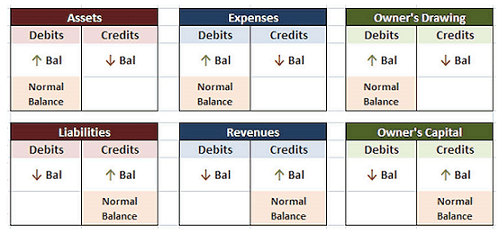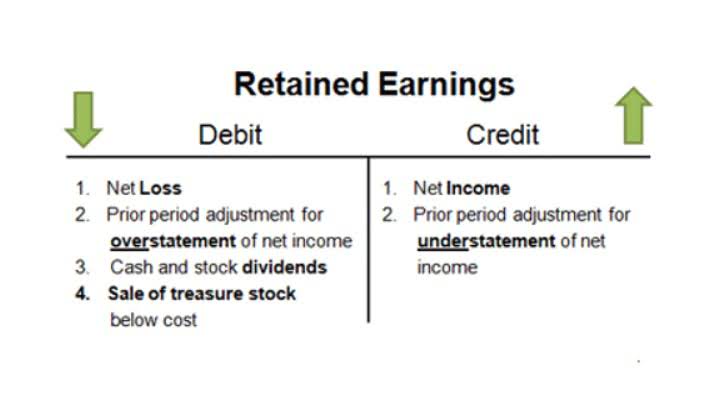
In conclusion, understanding shareholder equity and analyzing real-world examples helps investors better comprehend a company’s financial position and assess its potential investment merits. In our examination of PepsiCo and Coca-Cola, we have seen how positive shareholder equity signifies a strong financial base for these industry leaders. This knowledge enables investors to make more informed decisions when considering investment opportunities in the stock market.

Negative shareholders’ equity

If we rearrange the balance sheet equation, we’re left with the shareholders’ equity formula. Shareholders’ equity is the residual claims on the company’s assets belonging to the company’s owners once all liabilities have been paid down. Shareholders Equity is the difference between a company’s assets and liabilities, and represents the remaining value if all assets were liquidated and outstanding debt obligations were settled. Cash (an asset) rises by $10M, and Share Capital (an equity account) rises by $10M, balancing out the balance sheet. The most liquid of all assets, cash, appears on the first line of the balance sheet.
- Accurately determine a company’s shareholders’ equity to assess its true financial standing and ownership value.
- – A company with negative shareholder equity can still generate profits through efficient operational management and revenue growth.
- A company’s equity position can be found on its balance sheet, where there is an entry line for total equity on the right side of the table.
- By comparing this data with industry benchmarks and historical trends, analysts can make more informed investment decisions.
- A company’s shareholder equity account is initially set with the founder or founders’ initial investment.
How to Calculate the Equity Ratio
- On the other hand, shareholders can only expect to receive liquidation residual value when all of the company’s liabilities are paid off using the company’s assets.
- Investors and analysts often use these metrics in conjunction with one another to evaluate a company’s financial health.
- In conclusion, shareholder equity plays an essential role in the financial analysis of both individual investors and institutions alike.
- Additional Paid-in Capital includes the amount investors paid above the par value for their shares.
- A P/B ratio below 1 signifies that the stock may be undervalued, while a ratio above 1 implies potential overvaluation.
- That is why individuals usually hesitate to invest in companies with negative SE, deeming them to be an unsafe or risky investment option.
In simpler terms, it signifies how much net value would be available for the shareholders if the firm was liquidated. This essential financial metric is vital for investors and analysts seeking insights into the financial health of a business. Preferred stocks and preferred shares refer to the same thing—they are interchangeable terms.Preferred stock is a unique Oil And Gas Accounting form of company ownership that combines elements of both stocks and bonds.
How to Interpret Total Equity?

Subtracting liabilities from assets, we see that shareholders’ equity was therefore $66.8 billion ($331.2 billion -$264.4 billion). This is the same figure reported lower on the balance sheet, under shareholder equity. Financial equity represents the ownership interest in a company’s assets after deducting liabilities. It reflects the value that belongs to the shareholders or owners of the business. Treasury stock reduces total equity as it represents shares repurchased by the company, reducing the overall ownership interest.
- A healthy equity balance signals a lower risk investment, as it means the company has sufficient assets to back its operations and obligations.
- For example, return on equity (ROE), which is the company’s net income divided by shareholders’ equity, measures how well a company’s management is using equity from investors to generate profit.
- In equity research, by contrast, it’s more common to focus on the equity value since research analysts are advising investors on buying individual shares, not the entire business.
- For example, if a company reports total assets of $500,000 and total liabilities of $200,000, its shareholders’ equity would be calculated as $500,000 minus $200,000, resulting in $300,000.
- The accounting equation is based on the premise that the sum of a company’s assets is equal to its total liabilities and shareholders’ equity.
For instance, if a common stock with a par value of $1.00 is issued for $10.00 per share, $1.00 is allocated to common stock, and the remaining $9.00 is recorded as APIC. This component reflects the premium paid by investors beyond the minimum legal capital required for each share. It demonstrates the market’s perceived value of the company’s shares at the time of issuance. When liquidation occurs, there’s a pecking order that applies which dictates who gets paid out first.

The stockholders’ equity section is located in the bottom half of the balance sheet, directly following the “Total Liabilities” line. Total Equity represents the value that would remain for shareholders if the company were to sell all its assets and pay off all its liabilities. In this case, the $700,000 in equity is the shareholder’s claim on the company’s assets after its debts have been settled. The number of shares issued and outstanding is a more relevant measure than shareholder equity for certain purposes, https://creditosi.uy/annuity-table-overview-present-and-future-values/ such as dividends and earnings per share (EPS). This measure excludes treasury shares, which are stock shares owned by the company itself.
- Total equity, often referred to as stockholders’ equity or owner’s equity, comprises several distinct accounts that collectively represent the owners’ stake in the company.
- Learn to effectively locate and understand a company’s total equity on financial statements to assess its financial foundation.
- In simple terms, shareholder equity equals a firm’s total assets minus its total liabilities.
- To calculate enterprise value from equity value, subtract cash and cash equivalents and add debt, preferred stock, and minority interest.
- A company’s financial statement consists of 3 principal components, namely – Assets, Liabilities, and Shareholders Equity.

Before making any investment, you’ll want to perform the how to find total shareholders equity proper analysis or find an advisor who can help you make those decisions. Whether negative stockholder’s equity is indicative of a larger problem usually requires taking a closer look at the company’s financials. Buybacks, for example, can push stockholders’ equity into negative territory in the short term but benefit the company financially in the long run.
How to Calculate Total Equity?
Only “accredited” investors, those with a net worth of at least $1 million, can take part in private equity or venture capital partnerships. For investors who don’t meet this marker, there is the option of private equity exchange-traded funds (ETFs). Venture capitalists (VCs) provide most private equity financing in return for an early minority stake. Sometimes, a venture capitalist will take a seat on the board of directors for its portfolio companies, ensuring an active role in guiding the company. Venture capitalists look to hit big early on and exit investments within five to seven years.
